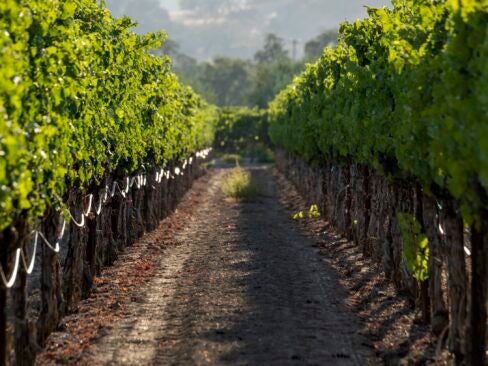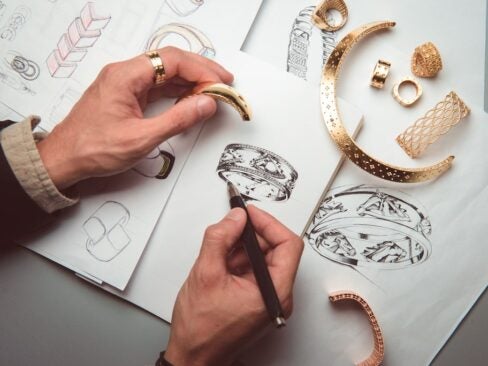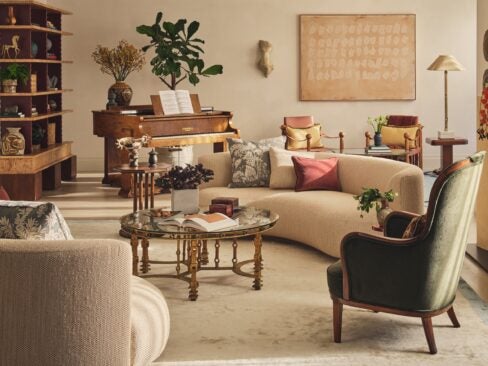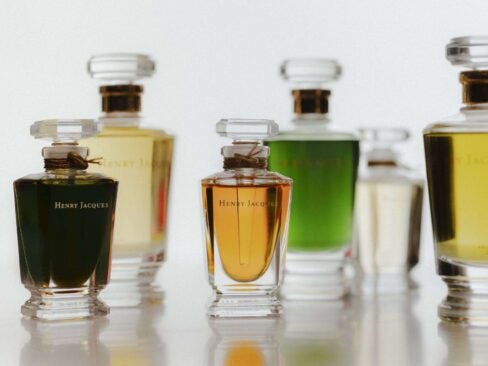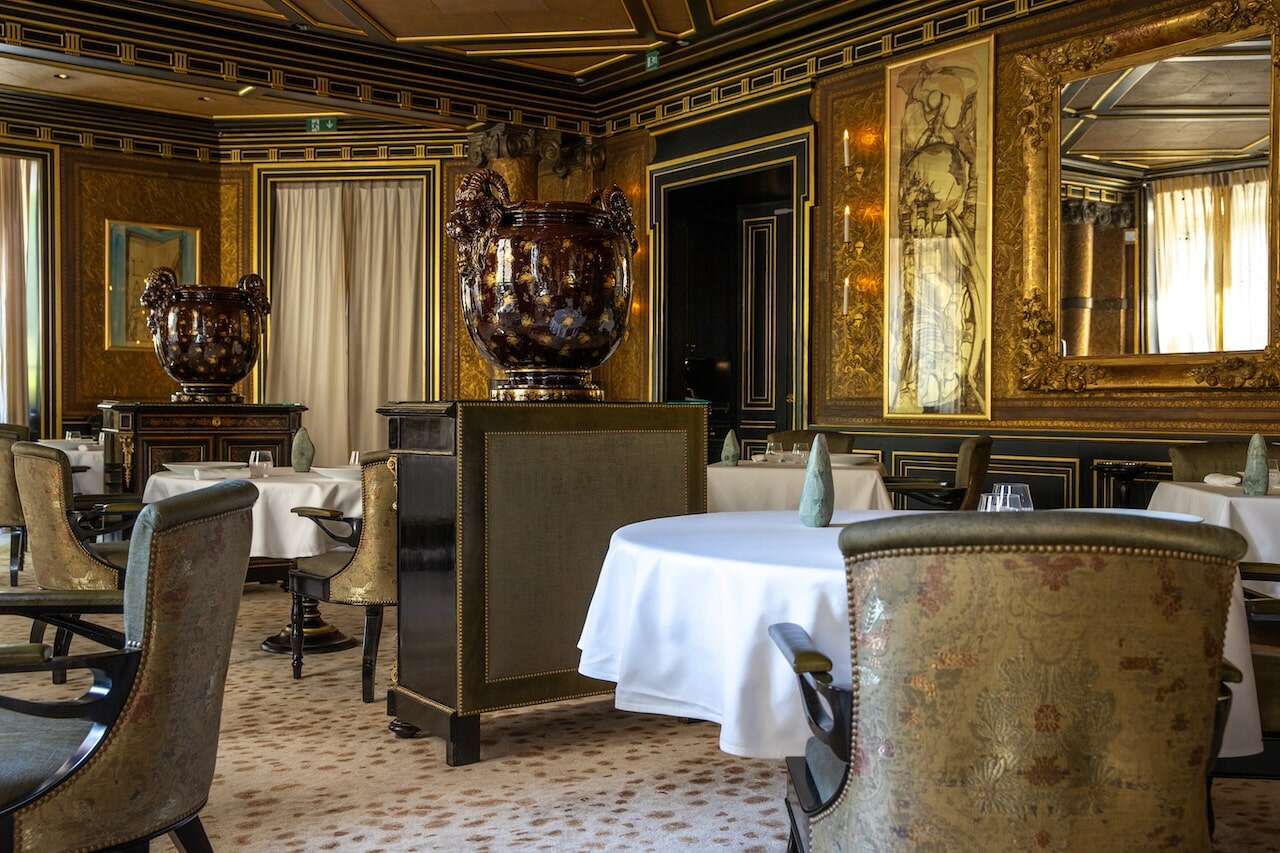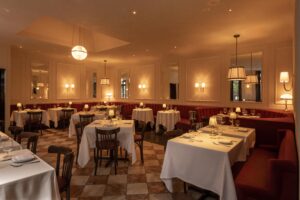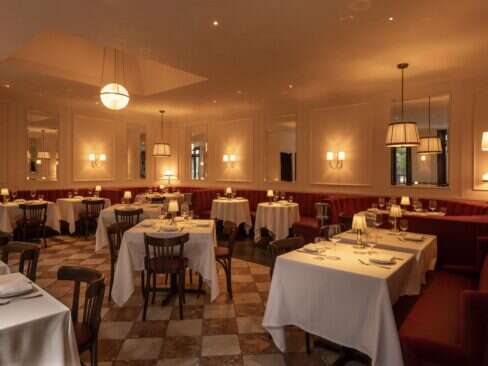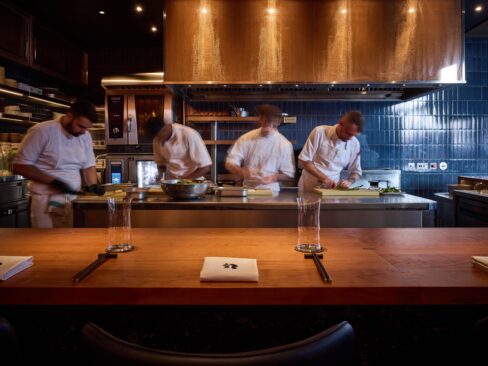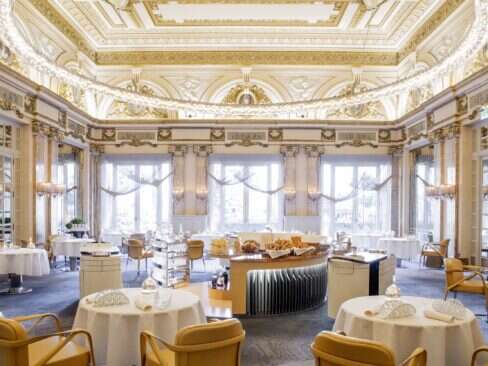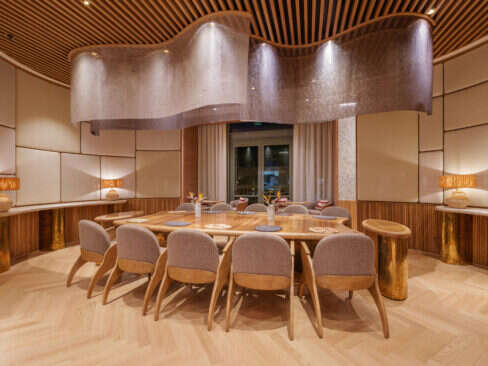Far from succumbing (as some might have it) to an over-touristed Emily In Paris anodyne theme park, the City of Lights remains as mesmerizingly beautiful as ever. A stroll through the wonderfully revitalized 17th-century streetscape of the Marais, across the Seine to the magnificently restored Notre Dame and onto the left bank will still conjure up those little moments of magic and frissons of quintessential Frenchness that it always has done.
The post-Olympics Parisian landscape, having courted controversy with its heavy-handed removal of migrants and rough sleepers, emerges pristine, picture-perfect, and glamorously atmospheric. No matter what’s thrown at it, be it Nazi occupation, uncontrolled immigration, or 21st-century overtourism, it seems, as Humphrey Bogart’s Rick famously remarked to Ingrid Bergman’s Ilsa: “We’ll always have Paris”.
And there can be few better ways to embrace it than through the floor-to-ceiling windows of a suite at La Réserve, looking down onto the illuminations garlanding the Jardin des Champs Élysées, presided over by an unimpeded perspective of the Eiffel Tower. La Réserve, housed in an 1854 mansion constructed for the Duc de Mornay, Napoleon III’s half-brother, and latterly Pierre Cardin’s Parisian home, is one of only 12 hotels in Paris accorded “Palace’ status. Exuding a softly spoken sumptuous sophistication, with just 15 rooms and 25 suites, it’s among the French capital’s most coveted addresses.
It’s also home to Le Gabriel, the hotel’s fine dining destination, overseen by Jerome Banctel who garnered two Michelin stars within a year of its 2015 opening. In 2024, he was one of only two chefs in France inducted into that ultra-exclusive collective of haute-cuisiniers, those awarded three Michelin stars, of which there are only 10 in Paris.
The chef
French cuisine, so long lauded as the ultimate yardstick against which all others were measured, was called into question not so long ago, for a lack of innovation that kept it mired in buttery sauces and an unassailable self-belief. The current Michelin Guide to the country where it first appeared in 1900 is an invitation into a much-changed culinary landscape, not least with a preponderance of Michelin stars brandished by chefs who’ve yet to see their 40th birthday.
While, at 53, Banctel might not appear an obvious participant in this new French revolution, his carefully cultivated style at Le Gabriel is very much in sync with this reformation of the country’s gastronomic frontiers. In conversation with Banctel, I encounter a serious, self-effacing individual where the success he’s enjoying isn’t some sudden fame-fuelled thrusting into the limelight, but the result of decades of dedication to his craft. That began unglamorously at 16 with hotel school in his native Brittany but has since seen Banctel working alongside some of the greatest names in French gastronomy.
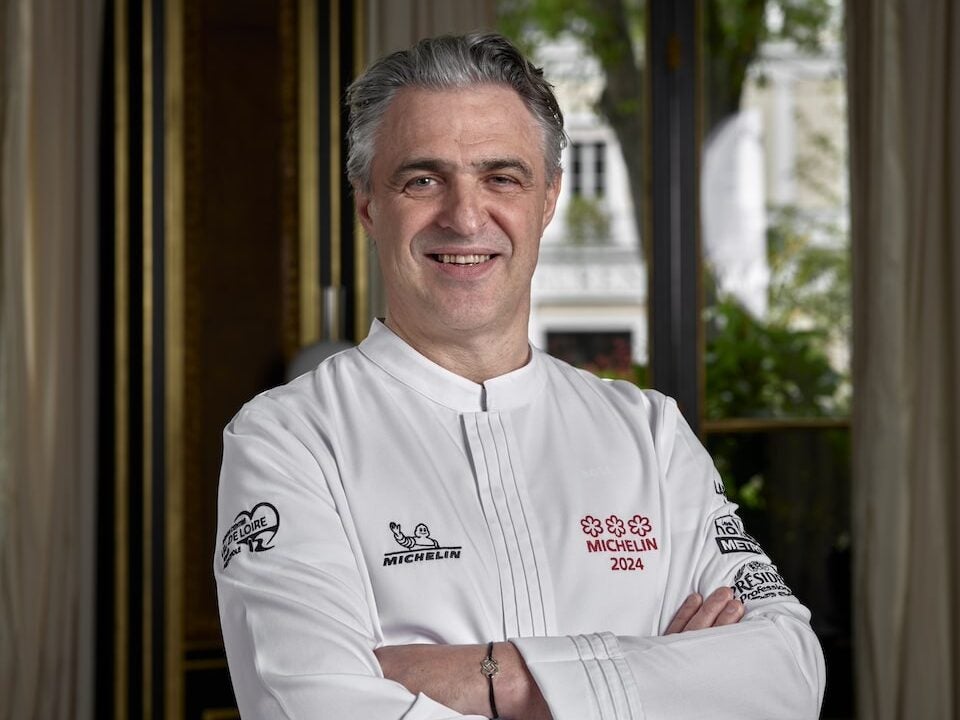
The most influential was the legendary Alain Senderens, with whom he worked at the three-starred Lucas-Carton, a Parisian institution since the 19th century. Senderens was an early disruptor of French culinary tradition and his incorporation of foreign influences, principally Far Eastern ones, remains a notable signifier of his disciple’s cooking. Widely traveled and open to procuring new techniques, Banctel readily acknowledges Japanese cuisine as his most defining outside influence.
After living in the shadows of giants, this sudden flowering of his gastronomic identity at Le Gabriel is not only running free but has run straight into the coveted third star. What’s left to do after the ultimate accolade, I enquire? To which a typically direct, if not rather obvious, response darts back: “Hang on to it”.
The menu
On each table inside Le Gabriel, sits a big pointy lump of grey-green stone, representing menhirs, the ancient stone structures found all over Brittany. Tapping his head, Banctel opines, “Half of my brain functions in Breton while the other half is preoccupied elsewhere!” This defining dichotomy within his culinary creativity manifests itself in a dedicated Breton menu, Virée (jaunt) alongside Périple (voyage), anchored around his adventures in global gastronomy. During the season there’s also a hunter’s menu based upon whatever finds its way in from the fields and forests. Without hesitation, we head into the Celtic half of Banctel’s cranium, with Virée.
Both menus are configured as eight or 10 courses, but as the staff quickly point out, the latter option can keep you confined à table for some considerable time, though as enforced detentions go it shouldn’t prove unduly onerous. Sublime technical skill embellished with artful presentation characterizes Banctel’s cuisine as it slips seamlessly into its three-starred skin. Not least with ultra-light sauces devoid of oil or butter, disporting a strong acidity amidst purposefully powerful flavors.
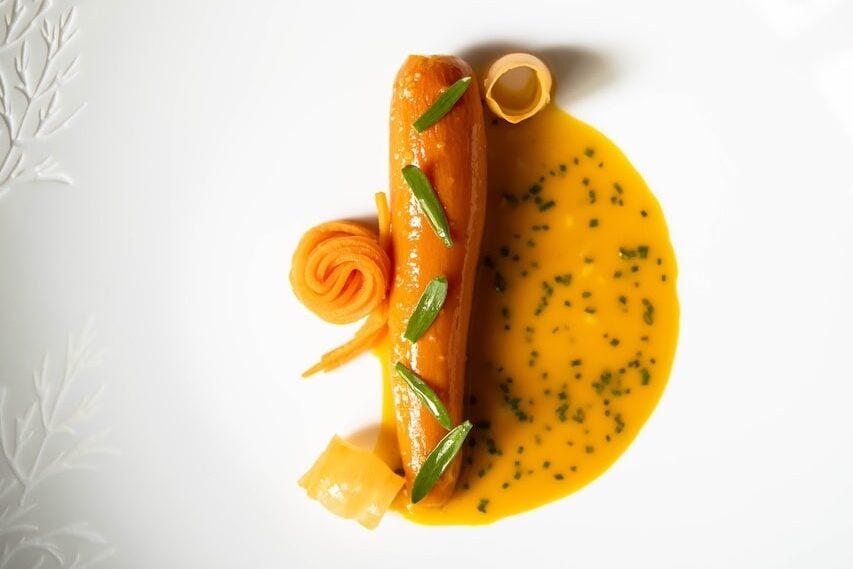
A breaded deep-fried snail in comté cheese and wild garlic cream along with a pork tartlet in apple and caviar, pave the way for – a carrot. A signature dish produced using limewater cooking techniques acquired in Turkey, it’s soft and sweet on the outside and filled with a carrot and ginger mousse. Like a luminescent orange vegetarian sausage, it sits in its own unrepentantly acidic carrot and ginger sauce, for which a buckwheat brioche with Brittany butter is to hand. From Bugs Bunny’s ubiquitous stage prop to center stage in a three-starred Parisian restaurant, it seems the humble carrot has been on quite a journey and is disarmingly delicious.
Squid tagliatelle was cut into pasta-like strips coiled on top of a perfectly reduced duck jus and adorned with Kristal caviar. Deep flavours that in the wrong hands could go deeply wrong but here produce an adroitly executed, truly sublime dish.
The irrepressibly charming Dimitri reveals himself as number two of five sommeliers, and as with all the serving staff, negotiates a pitch-perfect path between informative professionalism and amiable informality. Wine at Le Gabriel, even by three-star standards, is a serious undertaking. La Réserve’s billionaire owner, Michel Reybier, is a devoted oenophile with a clutch of notable vineyards to his name, including Cos d’Estournel in Bordeaux and Tokaj-Hétszóló in Hungary. The same openness characterizing Banctel’s cooking was mirrored in the pairings, where a 20-year-old Palo Cortado sherry accompanied the squid, and an artichoke dish was perfectly complemented by Masumi Aka sake.
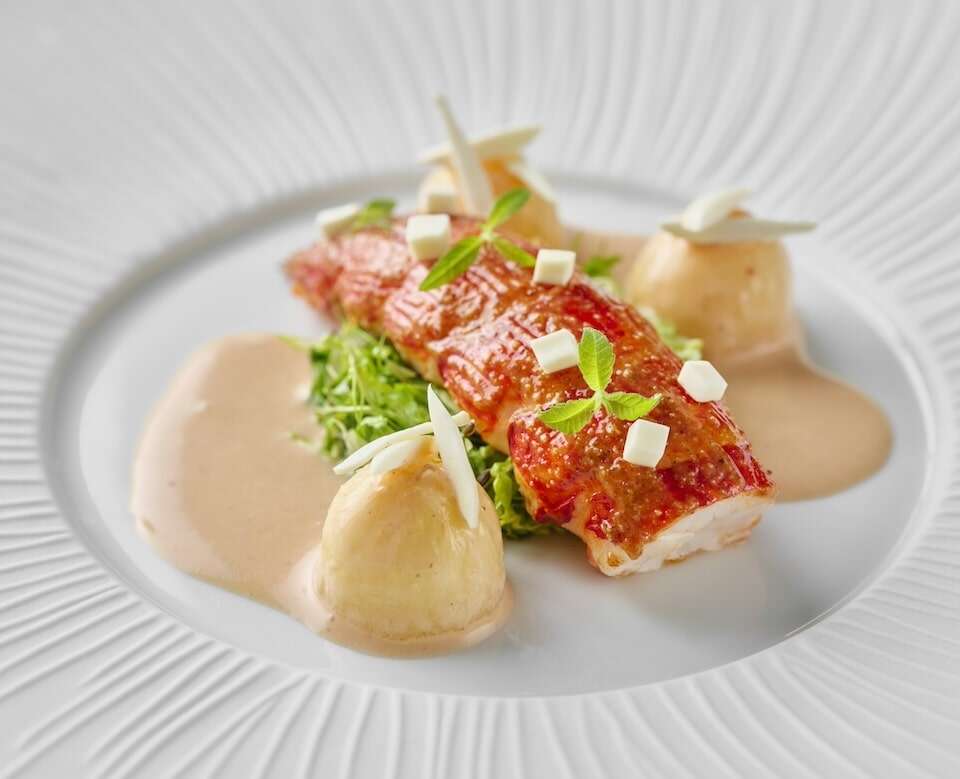
Another Banctel signature of Breton blue lobster grilled Japanese style over binchotan charcoal in a corn sauce was partnered by a large goblet of lobster broth, though in a reassuring adherence to tradition, also with an exceptional Chassagne Montrachet. Pigeon cooked in Apicius spices, those attributed to the Roman senator, Coelius Apicius, (supposed author of the first cookbook), was in homage to Alain Senderens whose Duck Apicius became an enduring dish of legend.
Exquisitely crafted dessert courses of caramel-flavoured apple in buttermilk, and kumquat in yoghurt and chestnut honey, where the expertise of award-winning pâtissier, fellow Breton Jordan Talbot, was deployed, rounded out a masterclass in contemporary culinary expertise leaving no doubt as to why Banctel has just pulled up a chair at the top table of French gastronomy.
Interiors
Apparently, Pierre Cardin occupied the ground floor of this building while the upper floors were made available to his guests, some of whom displayed no great urgency to leave. Being a friend of Pierre’s came with benefits. How Le Gabriel’s dining room was configured inside Cardin’s apartment is unknown but with its high ceilings and light flooding in from the Champs Elysée’s gardens, the space portrays a serene and stately opulence.
Jacques Garcia, the celebrated designer whose legendary ability to marry the traditional elegance of period properties with spectacular contemporary styling has no equal, delivers up with La Réserve, a retreat of rare beauty and refinement. With staff quietly exiting out of secret doors to squeak their way discreetly across the 19th-century parquet flooring, La Réserve is more redolent of an exclusive private club than a hotel.

The restaurant is accessed almost by accident off a cosseting cozy little bar, Le Gaspard, that’s easy to fall into and not so easy to clamber out of. Basking in its remodeled belle-epoque beauty with just nine well-spaced tables, the room is perfectly arranged for the stylishly coutoured staff bearing the trays of food, to weave their way around. Cutlery, napery and glassware, as with everything else, are of an exceptional standard, while at the far end of the room behind a door behind a screen, is a French chef gently coaxing French haute cuisine towards horizons new. There can be little doubt that he’s at the top of his game.
Must order: Le Carotte de Sable – Capable of seducing even the most committed of carnivores
What to drink: Michel Reybier Champagne 1er Cru Brut – It would be rude not to, and you definitely won’t be disappointed
Best seat in the house: Seat 5bis is quietly positioned at the end of the room opposite the kitchen door, and commands an all-encompassing view of the restaurant
